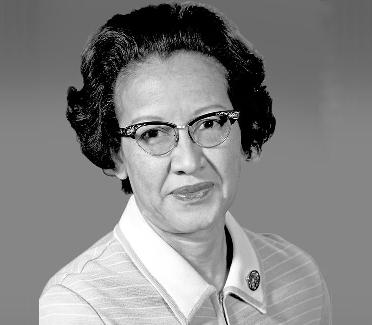
10 minute read
GROUNDBREAKING RESEARCH BY WOMEN SCIENTISTS
GROUNDBREAKING RESEARCH BY WOMEN SCIENTISTS
Violeta Hernandez
Advertisement
Genomic Biotechnologist & Molecular and Cellular Biologist with focus on Vaccinology
Science-related fields have been dominated mostly by men. According to United Nations data, less than 30% of researchers in the world are women (Nature Cell Biology Editorial, 2018). This may be a consequence of the discouragement women face and/ or of their lack of interest in the area of science, the so-called STEM fields (science, technology, engineering, and math).
In spite of all the challenges of gender discrimination and the lack of recognition in the scientific community that women have to cope with, there have been many inspiring women in these areas who
have made remarkable contributions to science and shed light unto the unknown that is around us. Across these STEM fields the representation of women varies. Biology, for example, is one of the fields in which women are more represented, in comparison with engineering, computer science, or physics, owing to several probable reasons we shall not discuss in this article (Renken, 2016).
In biology, many advances have been achieved by women in different subfields, such as genetics. Among the many women represented in this domain, we may recall Barbara McClintock
(Hartford, Connecticut, 1902–Huntington, New York, 1992), who had a deep interest in plant breeding, and specifically in Zea mays (maize). In collaboration with Lowell F. Randolph, McClintock identified the maize chromosomes required to complete proper cytology tests. Surprisingly, in the Cornell cornfields McClintock discovered a rare maize plant: a triploid, which means that the plant has three sets of chromosomes in each cell. After analyzing the plant for several months, the two researchers published their report in The American Naturalist, but there was a small problem: Randolph’s name was on top (Parr, 2016). In spite of this lack of recognition, McClintock’s love of the discipline allowed her to remain committed.
Maize produces many colored kernels, and since each one of them is an embryo produced from an individual fertilization, hundreds of offspring can be scored on a single ear. This is why maize is an ideal organism for genetic analyses. In fact, thanks to these characteristic, McClintock was able to study transposable elements (TEs) ―also known as jumping genes― and her work proved revolutionary, suggesting that an organism’s genome is not a stationary entity, but rather is susceptible to changes and rearrangements. This and her many other contributions to genetics finally led her to being awarded the Nobel Prize in 1983 (Pray & Zhaurova, 2008).
Another notable geneticist and hematologist was Janet Davison Rowley (New York, New York, 1925–Chicago, Illinois, 2013). She was the first scientist to identify a chromosomal translocation as the cause of leukemia and many other cancers. This led to the understanding that cancer is a genetic disease and became the basis for personalized cancer care and targeted therapy (National Women’s Hall of Fame, n/d).
Rowley became interested in chromosomes a decade after the discovery of DNA, while she was at Oxford together with her husband (a noted pathologist), who was on sabbatical there. Prior to that, she had worked as a physician at a clinic for children with learning disabilities in Chicago, where she returned later on to continue her research work on a part-time basis, while also raising four children. Working at home, she discovered the swapping of material between chromosomes 8 and 21 in a patient with
acute myeloid leukemia. Rowley’s career was marked by many other accomplishments: she demonstrated the importance of the balanced translocations in chronic myeloid leukemia (CML) and in the 1970s she explored the consequences of the Philadelphia chromosome, a genetic abnormality in chromosome 22 of CML cells, which provokes uncontrollable cellular divisions. This finding led to the development of the drug Imatinib, which has improved the outcomes of patients with CML (Hokland, 2014; National Cancer Institute , 2018).
In addition to all her brilliant work corroborated by many of her colleagues and recognized by many prizes―, Rowley also helped many women postdocs to develop as scientists while at the same time putting their families first. She was characterized by an outspoken personality combined with a supportive approach (Hokland, 2014; National Women’s Hall of Fame, n/d).

Among the most creative scientific theorists of the modern era, the place of Lynn Margulis (Chicago, Illinois, 1938–Amherst, Massachusetts, 2011) is secure.
It had long been established that, over time, the effects of natural selection on mutations would generate new adaptations. This gave rise to new questions: did it mean that new lineages and adaptations form by branching off of old ones and inheriting the genes of the old lineage? Many researchers answered no. Margulis discovered that a major organizational event in life likely involved the combination of two or more lineages through symbiosis.
In the 1960s, while Margulis was studying the structure of cells, it seemed to her that mitochondria an organelle that generates the energy required for metabolism― resembled bacteria. Others had posited the same thing in the late nineteenth century, and some even suggested that mitochondria arose from bacteria living in permanent symbiosis in both animals and plants.
There are many illustrations of the idea in plant cells. For example, algae and plant cells have a set of bodies used to carry out photosynthesis, which are known as chloroplasts. The energy they capture from sunlight induces biochemical reactions that produce organic matter. Thus, chloroplasts ―like mitochondria― are similar to bacteria. Margulis and others suggested that chloroplasts and mitochondria evolved from symbiotic bacteria, specifically from cyanobacteria, small organisms that harness energy from light and that abound in both fresh water and in oceans. For Margulis, symbiosis was an unrecognized but major force in cellular evolution. She published her findings in 1970 in Origin of Eukaryotic Cells (University of California Museum of Paleontology, n/d).
Later on, in the 1970s, this was demonstrated by two teams of microbiologists headed by Carl Woese and W. Ford Doolittle, who studied genes inside chloroplasts of some species of algae and discovered that the chloroplast DNA was cyanobacterial DNA. The mitochondrial DNA was similar to the one in a group of bacteria that provokes typhus (Fig. 1).
After further study of the origins of other organelles and of eukaryogenesis ―an evolutionary process leading to the origin of the eukaryotic cell―, it has been shown that symbiosis plays a crucial role in them. Nevertheless, not all of Margulis’s ideas have been widely accepted. There is still a long way to go, as we come to understand that evolution is more flexible than was initially believed (Gray, 2017; University of California Museum of Paleontology, n/d).

Figure 1. Phylogenetic analyses based on genetic sequences support the endosymbiosis hypothesis (University of California Museum of Paleontology, n/d).

Becoming a scientist is not always an easy decision to make. A clear example of this is Polly Matzinger (b. 1947 in La Seyne, France), who worked stints as a bartender, carpenter, jazz musician, Playboy bunny, and dog trainer, and is now a chief of the T-Cell Tolerance and Memory Section of the National Institutes of Health (NIH) in the United States.
It all started one day while she was working as a cocktail waitress and overheard two professors from the University of California at Davis talking about animal mimicry. She asked them why no animal had ever mimicked a skunk: a raccoon with a white stripe
would have a selective advantage. Professor Robert “Swampy” Schwab, who was chair of Wildlife and Fisheries, was surprised at her question. For months he went to the bar, bringing her a variety of scientific articles and convincing her that science was fascinating. Matzinger would go on to earn an undergraduate degree in 1976 and a PhD in 1979 (Dreifus, 1998; National Institute of Allergy and Infectious Diseases, 2013).
In the field of immunology, Matzinger proposed the danger model, which says that the immune system is less worried about things that are foreign to it than those that do damage. There were two stages to this realization: in the first, Ephraim Fuchs (an eminent oncologist from the NIH) and Matzinger realized that a useful immune system would fight against dangerous things and ignore those that are not, but they could not figure out how to explain it. Then one day in the bathtub, Matzinger suddenly realized that “things that are dangerous do damage”: if there is no damage, there is no danger (Dreifus, 1998). Here again is proof, as many believe, that you can always find the best answer in simplicity.
The two scientists then had to find out how white blood cells learn about damage. The story of how they did so is a little odd: Matzinger and Annie (her border collie) were watching over some sheep grazing in a field, when something moved in the nearby woods, frightening the sheep, and Annie jumped up to protect them. As an immunologist, Matzinger related the incident to her work, thinking that alarm signals from damaged cells might wake up the dendritic cells sentinels present
in every organ, which could be said to resemble sleeping sheep dogs― and then alert the immune system (Matzinger, 1994; Dreifus, 1998).
This model explains most of what the immune system does right, as well as most of what it appears to do wrong, covering a broad range of areas, such as transplantation, the immunobiology of tumors, and autoimmunity. After many years, Matzinger still has critics that refuse to take her model seriously, but she is not cowed: she continues doing her research. While reading this article, you may have noticed that all these women have something in common: they were intrigued by life science processes, ranging from the origins of life to the treatment of devastating diseases such as cancer. As it happens, there is an interdisciplinary field concerned with the origins, early evolution, distribution, and future of life in the universe. The field is known as astrobiology: it explores whether or not extraterrestrial life exists and how humans may be able to detect it.
Jill Tarter (b. 1944 in New York) is a widely recognized astronomer, known for her work on the search for extraterrestrial intelligence (SETI). The question of whether we are alone in the universe has attracted the attention of humankind for many years and Tarter has tried for much of her life to provide an answer. She formerly worked as a scientist for NASA’s SETI program, which aims to identify transmissions from alien intelligence. She now works on the Allen Telescope Array, a group of more than 350 telescopes located northeast of San Francisco, California. Tarter and her team are looking for signals at frequencies or wavelengths that are different from what nature produces, according to her in 2014 (SETI Institute, n.d.; Walsh, 2018).
Many of us agree with Tarter that the universe certainly seems to have become more bio-friendly, although that does not mean that the habitable real estate is in fact inhabited. That is precisely the question we are asking. We do not know the answer, but it is astonishing that researchers are developing ways to explore the solar system and devising instruments that can picture worlds around other stars and so attempt to discover if there is any biology or technology present on them (Walsh, 2018).
REFERENCES
•Dreifus, C. 1998. A Conversation With Polly Matzinger; Blazing an Unconventional Trail to a New Theory of Immunity. The New York Times, June 16, sec. F, p. 4.
•Gray, M. W. 2017. Lynn Margulis and the endosymbiont hypothesis: 50 years later. Molecular Biology of the Cell, 28(10), 1285-1287.
•Hokland , P. 2014. Janet Rowley 1925-2013: a rock star of haematology and genetics. British Journal of Haematology, 165, 269-270.
•Matzinger, P. 1994. Tolerance, Danger, and the Extended Family. Annual Review of Immunology, 12, 991-1045.
•National Cancer Institute. 2018. How Imatinib Transformed Leukemia Treatment and Cancer Research. Available at <https://www.cancer.gov/research/progress/discovery/gleevec>
•National Institute of Allergy and Infectious Diseases. 2013. Laboratory of Immunogenetics: Polly Maztinger. Available at <https://www.niaid.nih.gov/research/polly-matzinger-phd>
•National Women’s Hall of Fame. n/d. Janet D. Rowley. Available at <https://www.womenofthehall. org/inductee/janet-d-rowley/>
•Nature Cell Biology Editorial. 2018. Celebrating women in science. Nature Cell Biology, 20, 993. Available at <https://www.nature.com/articles/s41556-018-0190-4#ref-CR3>
•Parr, P. 2016. Barbara McClintock (1902-1992): Fighting the Male Establishment. TheHumanist.
•Pray, L., & K. Zhaurova. 2008. Barbara McClintock and the discovery of jumping genes (transposons). Nature Education, 1(1), 169.
•Renken, E. 2016. Women in science tend to gravitate toward biology, cognitive sciences. The Brown Daily Herald.











